Buffalo Creek Flood Memorial
Introduction
Text-to-speech Audio
Images
The official state historical marker was placed by the West Virginia Division of Archives and History as part of the WV Celebration in 2005. Photo by Devon M. Goodman
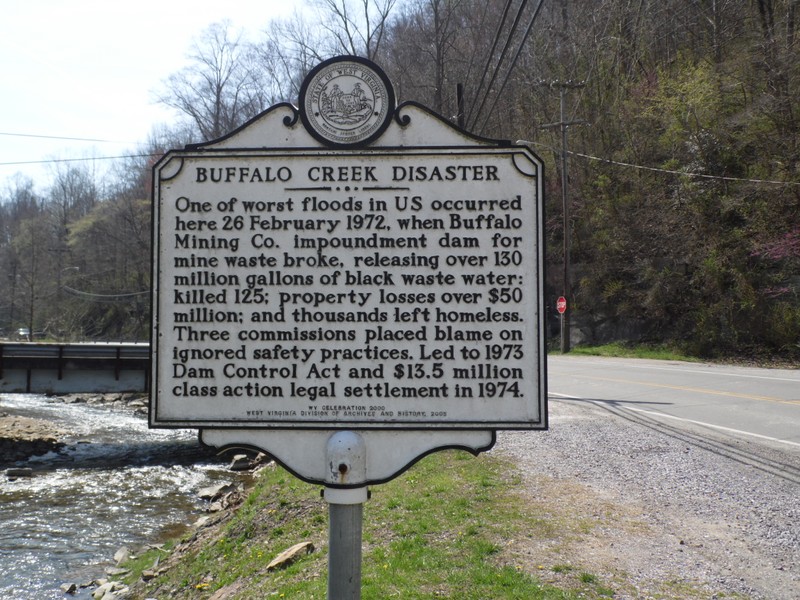
The south entrance of the Buffalo Creek Flood Memorial. Photo by Devon M. Goodman
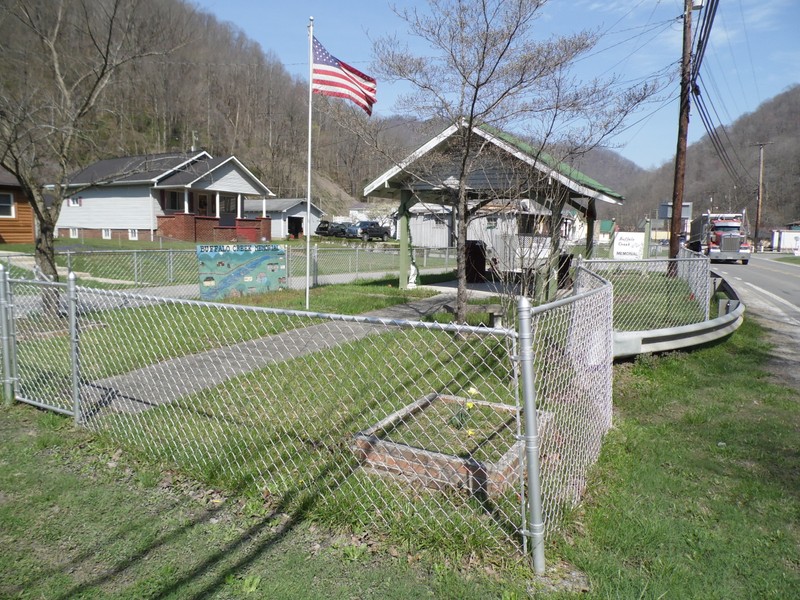
The north entrance of the Buffalo Creek Flood Memorial Photo by Devon M. Goodman
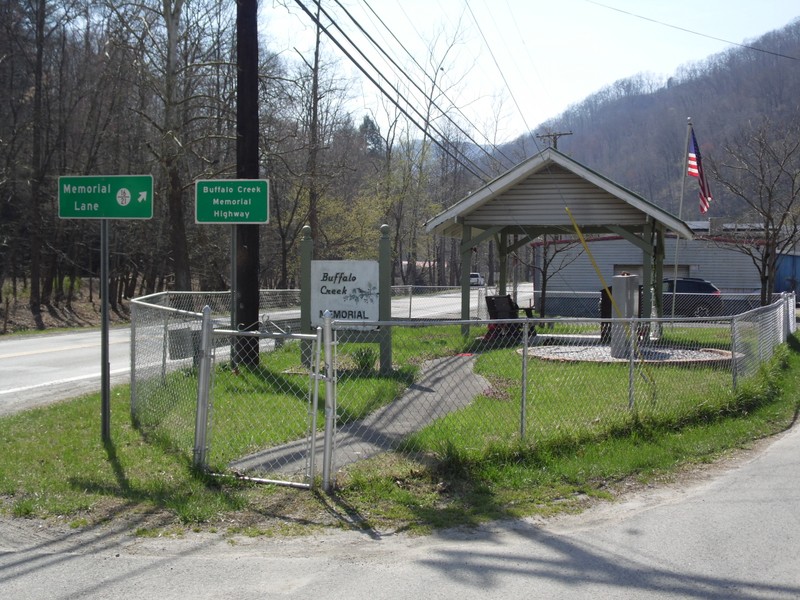
The granite memorial that lists the names of the 125 lives lost due to the Buffalo Creek Flood. Photo by Devon M. Goodman
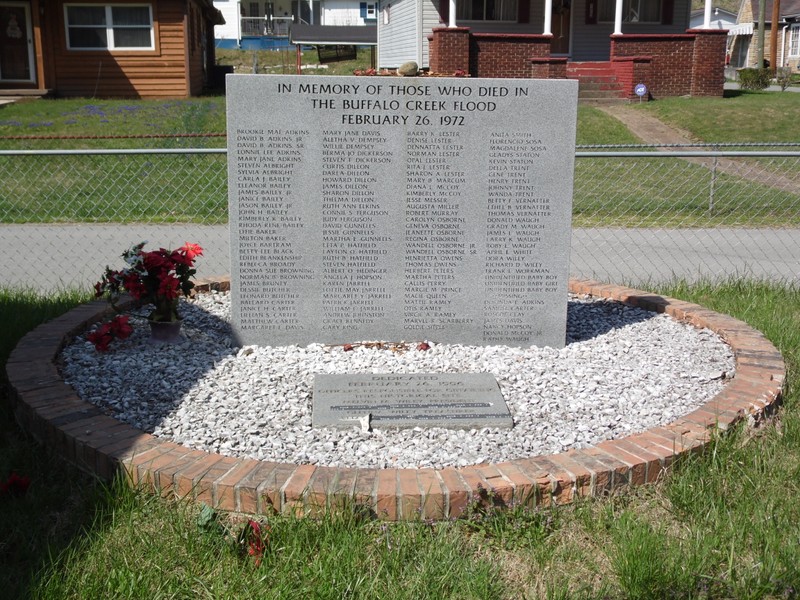
The highway marker placed in 2009 naming Highway 16, Buffalo Creek Memorial Highway. Photo by Devon M. Goodman
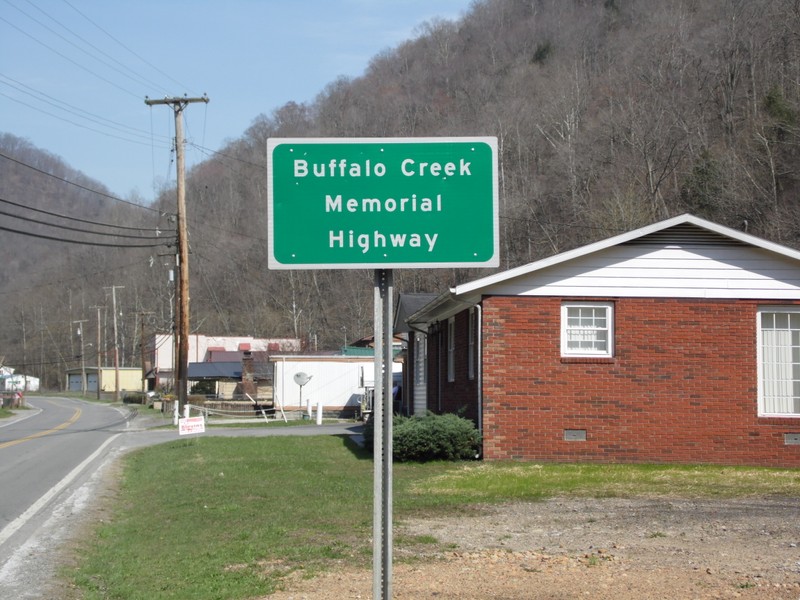
The mural painted by Canadian Muralist, Kevin Ledo, titled "Buffalo Creek Memorial Mural" Photo by Devon M. Goodman
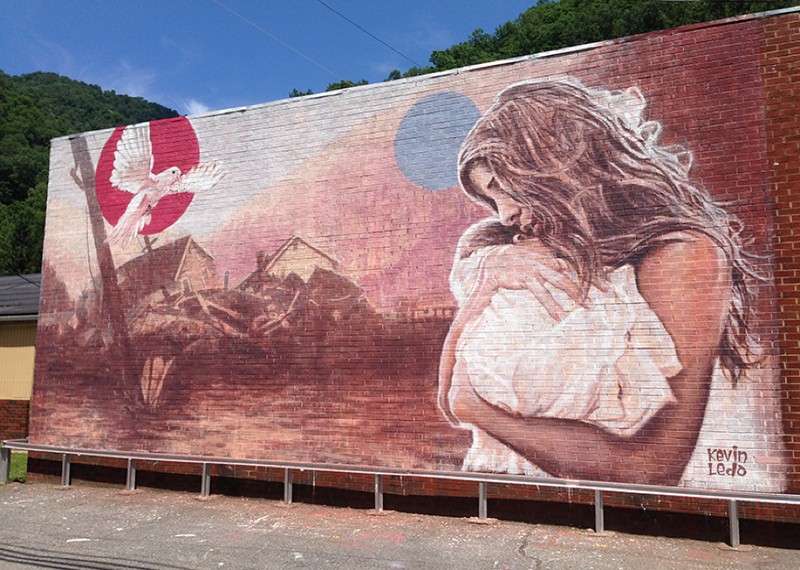
The aftermath of the Buffalo Creek Disaster. Photo by MSHA
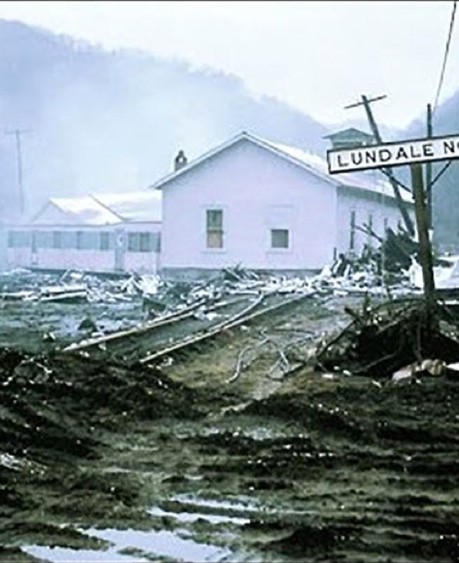
The site of the three dams that collasped causing the Buffalo Creek Disaster in 1972. Photo by Devon M. Goodman
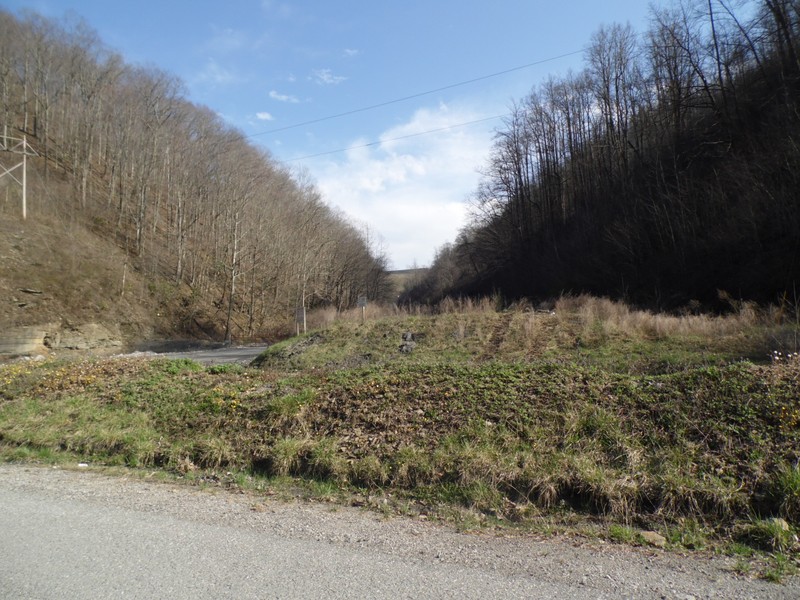
Backstory and Context
Text-to-speech Audio
The Piston Coal Company and its subsidiary, The Buffalo Mining Company, claimed that the devastating events that unfolded on that day were nothing more than an act of God. This claim was intended to remove liability from the company and was supported by Governor Arch Moore. Despite the claims the flood was an act of God, three separate commissions would find that Piston Coal Company disregarded several safety violations. The total damage exceeded 100 million dollars. The Piston Coal Company contributed only one million dollars to the clean-up and recovery efforts. The remaining costs were paid by local residents and taxpayers, and most of the property that was destroyed was never rebuilt.
Reports by mine inspectors prior to the disaster confirm that the leaders of the Piston Coal Company were aware of the unstable condition of the dam as a result of two minor cracks that had resulted in in a series of small spills. Tragically, these small spills resulted in several false reports that the dam had burst. As a result, many residents believed that the warning they received that cold February morning was just another exaggerated story. The initial disbelief contributed to the high death and injury toll.
The disaster led to new government regulations. A year after the disaster, the Dam Control Act of 1973 placed stricter regulations on the construction and maintenance of dams. Five years after the Buffalo Creek Disaster, President Carter signed the Surface Mining and Reclamation Act (SMCRA), establishing federal standards for coal slurry impoundments and for the reclamation of strip-mined land. This is a key piece of legislation that helps to prevent another such tragedy from occurring.
The Buffalo Creek Disaster Memorial Committee saw two major accomplishments in 1973, the dedication of the Buffalo Creek Memorial Library and the creation of The Buffalo Creek Flood Memorial. The committee locally raised 20,000 dollars to purchase the land and create a memorial park consisting of a small wooden picnic shelter, benches, as well as a podium with a door that when opened contains a Bible and visitor register. The memorial sits a male from the town of Man and just across the Buffalo Creek Memorial Highway (formerly Hwy 16) from the Buffalo Creek.
The Buffalo Creek Flood Memorial was expanded on the 25th anniversary of the Buffalo Creek Disaster and the 20th anniversary of the Surface Mining Reclamation Act to include a granite memorial resembling a tombstone with the names of the 125 people killed or still missing. The monument was dedicated during a wreath laying ceremony in August of 1997. The honorary wreath laying event was attended by the regions representative to the United States House, and community members. That event was co-sponsored by the West Virginia Organizing Project and the Citizens Coal Council, a group that actively serves as a coal industry watch dog.
During the summer of 2005 the official historic marker was placed very close to the community memorial. The marker was placed by the West Virginia Division of Archives and History as part of the WV Celebration of 2000. The steel plaque titled, “Buffalo Creek Disaster” reads,
“One of (the) worst disasters in (the) US occurred here 26 February 1972, when Buffalo Mining Co. impoundment dam for mine waste broke, releasing over 130 million gallons of Black waste water: killed 125; property losses over 50 million; and thousands left homeless. The commissions placed blame on ignored safety practices. Led to 1973 Dam Control Act and $13.5 million class action legal settlement in 1974.”.
In 2009 state delegates who represented Logan County introduced special legislation. The legislature changed the name of Hwy 16 from "Buffalo Creek Road" to "Buffalo Creek Memorial Highway". The highway spans 17 miles. The two signs on the furthest point of the highway mark the beginning and end of the tragic flood. Following the dedication of the highway in 2014, artist Kevin Ledo was brought in from Montreal, Canada. He is responsible for painting, “Buffalo Creek Memorial” a mural on one of the few buildings the survived the flood.
Cite This Entry
Smith, Mary Ellen, Clio Admin, and Sara Browning. "Buffalo Creek Flood Memorial." Clio: Your Guide to History. September 30, 2020. Accessed August 8, 2025. https://theclio.com/entry/22687
Sources
Associated Press. Mural, documentary remember Buffalo Creek disaster. June 20, 2014. http://www.washingtontimes.com/news/2014/jun/20/mural-documentary-remember-buffalo-creek-disaster/ (accessed April 9, 2016). Buffalo Creek Memorial Library. About. xhttp://buffalocreekmemoriallibrary.weebly.com/about.html (accessed April 9, 2016). Goodman, Nancy K., interview by Devon M. Goodman. Flood Survivor (April 9, 2016). Governor's Ad Hoc Commission of Inquiry 1973 . "The Buffalo Creek Flood and Disaster: Official Report from the Governor's Ad Hoc Commission of Inquiry 1973." W.V. Archives and History. 1973. http://www.wvculture.org/history/disasters/buffcreekgovreport.html (accessed April 9, 2016). History.com Staff. Dam Collapses in West Virginia. 2009. http://www.history.com/this-day-in-history/dam-collapses-in-west-Virginia (accessed April 8, 2016). Hufford, Mary. The memorial marker at the mouth of Buffalo Creek naming those who died in the Buffalo Creek flood. /08, 1997. Image. Retrieved from the Library of Congress, https://www.loc.gov/item/cmns001037. (Accessed May 01, 2016.) Jones, C. "Dedication Held for Buffalo Creek Memorial Highway." WSAZ News. August 10, 2009. http://www.wsaz.com/news/headlines/52843027.html (accessed April 8, 2016). Kersey, Lori. "40 years ago: Buffalo Creek Disaster." Gazette-Mail. February 25, 2012. http://www.wvgazettemail.com/News/201202250090 (accessed April 8, 2016). MSHA. Slurry Spill Suffering: The Buffalo Creek Flood. https://www.msha.gov/news-media/events/2016/02/25/slurry-spill-suffering-buffalo-creek-flood (accessed April 9, 2016). Rahall, Nick, and Mary Hufford. Congressman Nick Rahall and unidentified woman laying wreath at the Buffalo Creek Memorial site. /08, 1997. Image. Retrieved from the Library of Congress, https://www.loc.gov/item/cmns001038. (Accessed May 01, 2016.) Schwartz-Barcott, T. P. After the Disaster. Amherst, N.Y.: Cambria Press. Weaver, Bob. "A RETURN TO BUFFALO CREEK - 1972." The Hur Herald. 2002. http://www.hurherald.com/cgi-bin/db_scripts/articles?Action=user_view&db=hurheral_articles&id=3795 (accessed April 8, 2016). West Virginia Division of Culture and History. "West Virginia Highway Marker Database." West Virginia Memory Project. August 2005. http://www.wvculture.org/history/wvmemory/hmresults.aspx?County=Logan&Title=Buffalo%20Creek%20Disaster&Words=&Op=AND (accessed April 8, 2016).

